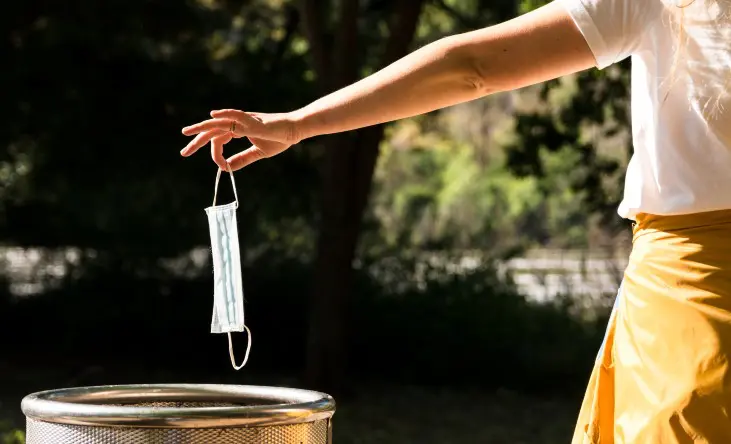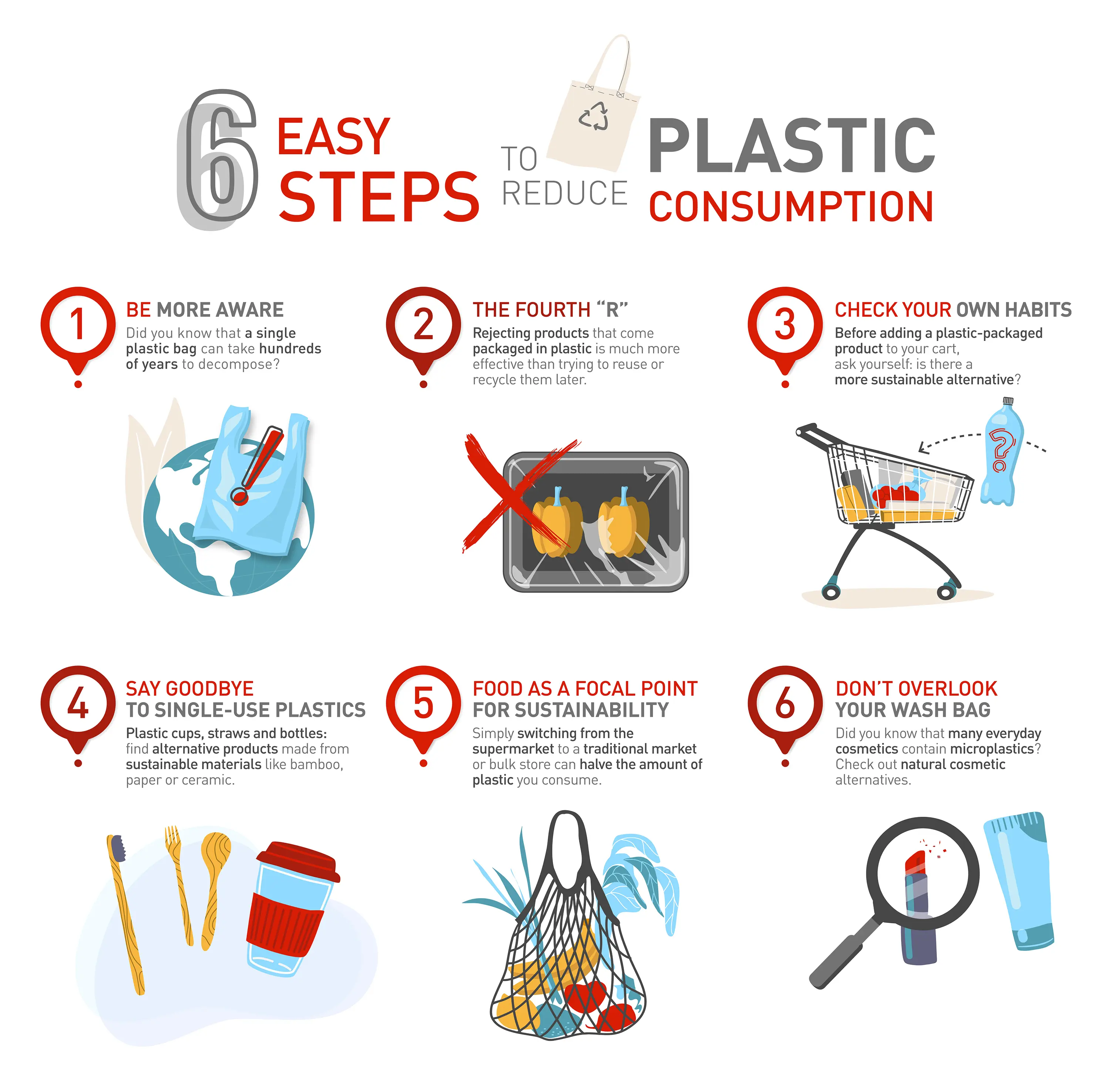SUSTAINABILITY| 14.12.2020
Can we live without plastic?
Plastic is everywhere in our daily lives, despite an increasing awareness of the threat it poses to the environment. It’s in our food, in hygiene products, in the packaging of most of what we buy and, unfortunately, also in our oceans. But can we live without it, or at least drastically reduce its consumption?
The plastic problem is serious. In the last 10 years, we have manufactured more plastics than in all human history. These materials account for approximately 80 percent of ocean pollution, warns Greenpeace. These figures give an idea of the urgent need for solutions. The planet can no longer sustain plastic pollution.
A plastic-free future: reality or fiction?
Some researchers hope that the inevitable depletion of fossil fuels will eventually force a slowing in the production of new plastics. However, plastic would not even disappear from our planet under this scenario, because it degrades so slowly.
In Spain alone, 2.7 million metric tons of plastic for bottled water are discarded every year, according to ANEABE (Asociación Nacional de Empresas de Aguas de Bebida Envasadas — the Spanish association of bottled drinking water companies). Knowing that each bottle can take up to 500 years to decompose, it’s easy to imagine the problem we face.
More and more campaigns and organizations are dedicated to promoting a more sustainable lifestyle that involves cutting our consumption of these materials. Vivirsinplastico.com explains that solutions to living with less plastic involve rejecting plastic-packaged products and returning to more traditional materials, such as glass, aluminum and paper.
MAPFRE is also playing a part with its MAPFRE Sin Plástico (plastic-free MAPFRE) campaign, launched in 2019. Through the campaign, the company has successfully prevented the consumption of 1.5 million plastic bottles and 2 million single-use cups.

From the ocean to the plate
An additional problem is that plastic is not always disposed of properly, so often ends up floating in the ocean. In fact, plastic waste has cost the lives of 1 million birds and at least 100,000 mammals, according to UN estimates. And it doesn’t just affect animals. A study involving people from countries such as the UK, Japan and Russia has shown that our intestines contain up to around 10 different microplastics, which enter our bodies through the food we eat.
Like the COVID-19 pandemic, this is just another example of how human well-being is closely linked to environmental balance. Speaking of which, MAPFRE recently published an article explaining the importance of measuring human impact on the environment.
Rethinking the economy
Moving toward a circular economy is one of the most obvious lines of action in the war on plastics. This type of economy uses a production and consumption model based on reusing, repairing, renewing and recycling materials and resources as often as possible.
The model allows us to optimize materials and waste, running counter to the current system of using and throwing away. Ultimately, it is committed to reusing, repairing, reducing and recycling, all with the aim of giving the materials a second life.
Living with less plastic: where to start?
We reviewed a Greenpeace study and an Oxfam Intermón guide to collate the main steps toward drastically reducing plastic consumption.
Step 1. Become aware
Marcel Proust said, “If you change, everything changes.” When you begin to realize that a single plastic bag can take several centuries to decompose, you may think twice before asking for one at the supermarket. Did you know that a single cigarette butt takes up to 5 years to decompose, while a diaper takes up to 450 years?
- Include a fourth “R”
You undoubtedly know the three Rs: repair, reuse and recycle. Now add one more to the list: reject. Rejecting products that come packaged in plastic is much more effective than trying to use them more than once or recycle them later.
- Review your habits
No one used cloth bags until we understood that it was necessary and quite easy to make the change. How many more things can we change with little effort? Before adding a plastic-packaged product to your cart, ask yourself: is there a more sustainable alternative?
- Say goodbye to single-use plastics
Plastic cups, straws and bottles (along with bags) are some of the most environmentally harmful products. They can’t be recycled and take centuries to disintegrate. There are many sustainable alternatives to these products in materials such as bamboo, paper and ceramics.
- Remember that food is a critical point
Food is a key part of a more sustainable life, and in the fight against plastics. Forty percent of the plastic packaging we consume is used on food products. Just swapping the supermarket for a traditional market or bulk store can halve the amount of plastic you consume.
Another small change that can cut plastic waste is switching to containers made from less harmful materials, such as glass or aluminum.
- Don’t overlook the toiletry kit
Did you know that many everyday cosmetics contain microplastics? This reality remains largely unknown. Fortunately, natural and plastic-free cosmetic solutions are becoming increasingly accessible.

Playing our part
Building a better, more sustainable world is everyone’s responsibility. MAPFRE is clear about this and wants to do its part, including in the fight against plastic pollution. The company has therefore committed itself to minimizing waste generation (paper, plastic, cardboard, electronic equipment, etc.) throughout the Group, and to achieving Zero Waste Certification at the Majadahonda complex (Madrid) next year. A good example of this is the MAPFRE Sin Plástico project, in which 80 percent of employees in Spain and Portugal participated in 2019. The project has successfully prevented the consumption of 1.5 million plastic bottles and 2 million single-use cups.
Another good example of the circular economy is CESVIMAP (Centro de Investigación, Experimentación y Formación sobre el Automóvil de MAPFRE — MAPFRE’s center for automobile research, experimentation and training), which designs sustainable vehicle repair methods. It helps improve the design of cars to make them safer and easier to repair, and provides a second life to thousands of vehicle parts declared a total loss. Through Cesvi Recambios, CESVIMAP has so far saved more than 47,500 metric tons of CO2, and generated an annual saving of 825 metric tons of glass and 1,200 metric tons of plastic at MAPFRE repair shops in Spain.
